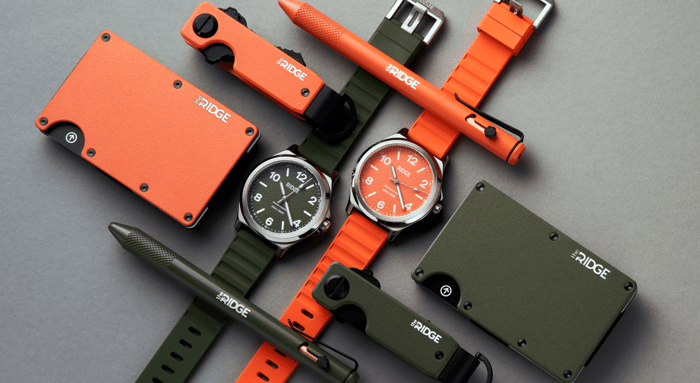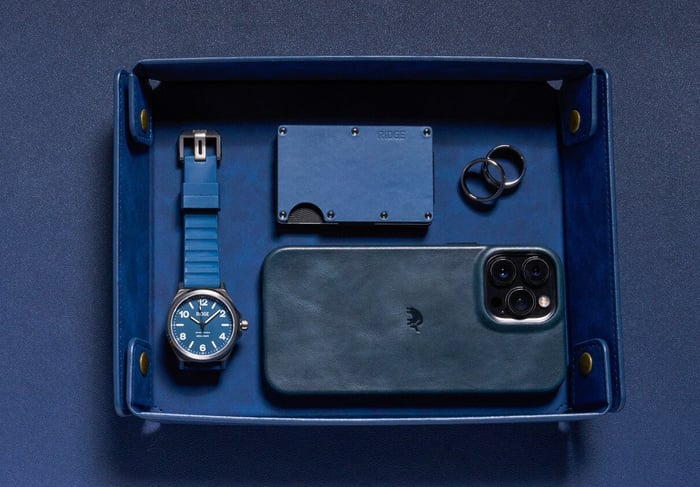 When it comes to buying rings, particularly online, whether for yourself or as a gift, knowing the correct ring size is important. Standard sizes don’t always guarantee the best fit, so accurate measurement is key to ensuring comfort and fit, and avoiding the inconvenience and cost of resizing, especially because you don’t get to try the ring on before purchase. This article answers the question: how do ring sizes work, offering a detailed guide on how to measure your ring size, and how to navigate the common challenges of ring sizing.
When it comes to buying rings, particularly online, whether for yourself or as a gift, knowing the correct ring size is important. Standard sizes don’t always guarantee the best fit, so accurate measurement is key to ensuring comfort and fit, and avoiding the inconvenience and cost of resizing, especially because you don’t get to try the ring on before purchase. This article answers the question: how do ring sizes work, offering a detailed guide on how to measure your ring size, and how to navigate the common challenges of ring sizing.
Understanding Ring Sizes: What Does the Number Mean?
Ring size refers to numbers (or alphabets) that represent the inner diameter of a ring, typically measured in millimeters (mm) or inches, or the circumference of your finger in millimeters, depending on the sizing system used. The number isn’t the diameter itself, but rather, it correlates to a specific diameter.
In most sizing systems, a higher number indicates a larger ring, with the number relating directly to the measurement of the ring’s inner circumference or diameter. For instance in the US system, a size 7 ring has a smaller diameter than a size 8 and corresponds to a finger circumference of approximately 54.4 mm.
Understanding these measurements is key when selecting a ring, especially if you're transitioning between different sizing systems or purchasing from international sellers. Keep in mind that ring size dimensions are universal, so the sizes/measurements apply equally to both women’s and men’s rings.
Are Ring Sizes Universal?
Ring sizes are not universal and vary across different countries and regions. The most commonly used sizing systems are the US, UK, European, and Asian ring size systems, each with distinct measurement scales.
US Ring Size System
The US ring size system uses a numerical scale where sizes typically range from 3(44.14mm) to 16(--mm) for adults, with half sizes available for more precise fitting. This system is also used in Canada and Mexico.
UK Ring Size System
The UK system uses an alphabetical scale ranging from A(37.8mm) to Z(68.5mm), with half sizes denoted by ½. For example, Size P refers to a 56mm ring diameter, and P ½ measures 57mm, which is equivalent to the US size 8 ring. This sizing system is also used in New Zealand, Australia, South Africa, and Ireland.
Europe Ring Size System
The European system measures the inner circumference of the ring in millimeters, typically ranging from about 49–73. This ring size system is used by most EU countries, including Austria, France, Norway, and others.
Asian Ring Size System
The Asian ring size system uses a numerical scale similar to the US but based on different measurements. This scale starts at 1(13mm) and ends at 27(68.05mm) with 1/3mm size increments. This scale is used in Japan, China, Korea, Hong Kong, and most East and Southeast Asian countries.
When buying a ring internationally, it is essential to convert the ring size to the correct system, to avoid getting wrong sizes. Many online retailers offer conversion charts to help with this.
How to Determine Your Ring Size
Here's are a few ways to accurately determine your ring size:
Using a Ring Sizer
A ring sizer offers an easy and straightforward way to measure your ring size.
Simply slip the sizer onto your finger and loop it around until it fits snugly.
Match the position of your finger to the corresponding number on the sizer.
Try this a few times and at different times of the day for more accurate sizing.
Use a String, Floss, or Paper Strip
Cut a length of floss, string, or paper, about 6” long.
Wrap the string or paper strip around the base of your finger ensuring it's snug but not too tight.
Mark the overlap
Measure the length against a ruler
Compare the measurements to a reliable ring size chart or printable ring sizer
You need a reliable ring size chart for this part and you can use our free ring size chart or printable ring sizer.
Use a Ring Size Chart
You can use a ring size chart to measure an existing ring or measure your finger. To measure an existing ring:
Place your ring on the chart
Align the inner edge of your ring with the matching circle to find the inner circumference.
To measure your finger:
Wrap a string around your finger
Mark the overlap and measure the length against a ruler
Compare your measurements to the ring size chart.
Use a Ring Sizing Kit
For greater accuracy, consider using a ring sizing kit, which typically includes a set of plastic or metal rings in different sizes to try on until you find the perfect fit for your finger.
What to Do if You’re Between Sizes
If you find yourself between two sizes, Deciding whether to size up or down depends on various factors. in general, designable to size up if you're in doubt, particularly if the ring is for daily wear, as fingers tend to swell slightly throughout the day. A ring that’s too tight can be uncomfortable and difficult to remove, while a slightly larger ring can be resized down if necessary.
However, if the ring has a wide band, it's often better to go up a size to ensure comfort. On the other hand, with thinner bands, the difference may be negligible so choosing the smaller size might work.
Factors Influencing Ring Size: Style, Design, Material
The design, style and material of a ring can significantly influence how it fits. for instance:
Wide bands: these tend to feel tighter than thinner bands of the same size. If you’re selecting a wide band, consider sizing up by half a size to ensure comfort.
Intricate designs: rings with elaborate designs or settings may fit differently due to the way they sit on the finger. Always try on such rings before finalizing on the size.
Material: the metal of the ring can also affect its fit. For example, tungsten rings are heavier and less forgiving, meaning they should fit snugly while gold or platinum rings may have more flexibility.
Can Your Ring Size Change Over Time?
Yes, ring sizes can change over time due to factors like age, health, climate, and weight fluctuations. As we age, our fingers often become slightly larger, and weight gain or loss can also affect ring size. Conditions such as arthritis can cause joints to swell, often leading to needing a larger ring size.
It is best to check your ring size regularly or every few years, especially if you notice changes in your weight or health. Regular checks ensure that your rings remain comfortable and wearable.
Lifestyle and Ring Size Dynamics
Your lifestyle cannot have a surprising impact on your ring size. So, it is important to get rings that accommodate your lifestyle, work, and habits. Here are some factors that can affect your ring size:
Exercise: Exercise can temporarily affect ring size due to changes in blood flow and body temperature. During physical activity, blood flow increases, which can cause your fingers to swell slightly. This swelling can make your ring feel tighter than usual. When measuring your finger, ensure you do it when the swelling is gone, so you don’t get a ring that’s too loose and it’s advisable to get flexible rings like silicone rings if you work out regularly, to accommodate the changes in your ring size.
Climate: Fingers can swell in hot weather, due to increased temperatures and vasodilation, while cold weather can make them shrink. Consider the typical climate you live in when choosing your ring, or choose a ring size that's comfortable across varying conditions.
Long-term wear: Wearing a ring daily can affect its fit over time due to daily environmental exposure, natural factors, and body changes. Rings may gradually become looser or tighter depending on the conditions in which they are worn, especially for softer metal rings like silver and gold. Consider rings like titanium, tungsten, and carbon fiber rings that hold up better against these elements for everyday wear.
When and How to Resize Rings
Resizing a ring is a common process but comes with limitations. Most rings can be resized by a jeweler by either adding or removing material to adjust the size. However, those from tough metals such as tungsten or titanium rings, cannot be resized due to their hardness. Similarly, rings with intricate designs of those sets with stones around the band may be difficult to resize without compromising their integrity.
It is advisable to resize a ring when it longer fits comfortably, and they can be resized up to two or three times in their lifetime, depending on the complexity of the design and gemstone placements, but in some cases, alternative solutions like ring guards can be used to temporarily adjust the fit, rather than adjusting the ring itself.
Ensure the Perfect Fit With Ridge
Finding the perfect ring size is essential for comfort and longevity. Whether you're buying a ring for yourself as a gift, understanding the nuances of ring size ensures you can make an informed choice.
If you need further assistance with getting the right ring size or finding the perfect ring for you, reach out to us. At The Ridge, we prioritize quality in all our ring designs, ensuring you receive a product that fits perfectly and stands the test of time. Explore our ring collection today and find your perfect fit.
FAQs
How big is a size 7 ring?
A size 7 ring in the US ring system has an inner circumference of approximately 54.4 millimeters and a diameter of about 17.3 millimeters.
How do you know your ring size?
You can determine your ring size by measuring the circumference of your finger with a string or measuring tape and comparing it to a ring size chart. You can also visit a jeweler or use a ring size kit for accurate measurement.
How do I find out my girlfriend's ring size without asking?
To find out your girlfriend’s ring size without asking, you can borrow a ring she wears on the finger you intend to buy a ring for or measure the circumference of the finger while they are asleep.
How does sizing a ring work?
Sizing a ring involves either adding or removing material to adjust the diameter of the ring’s band for a better fit.













































